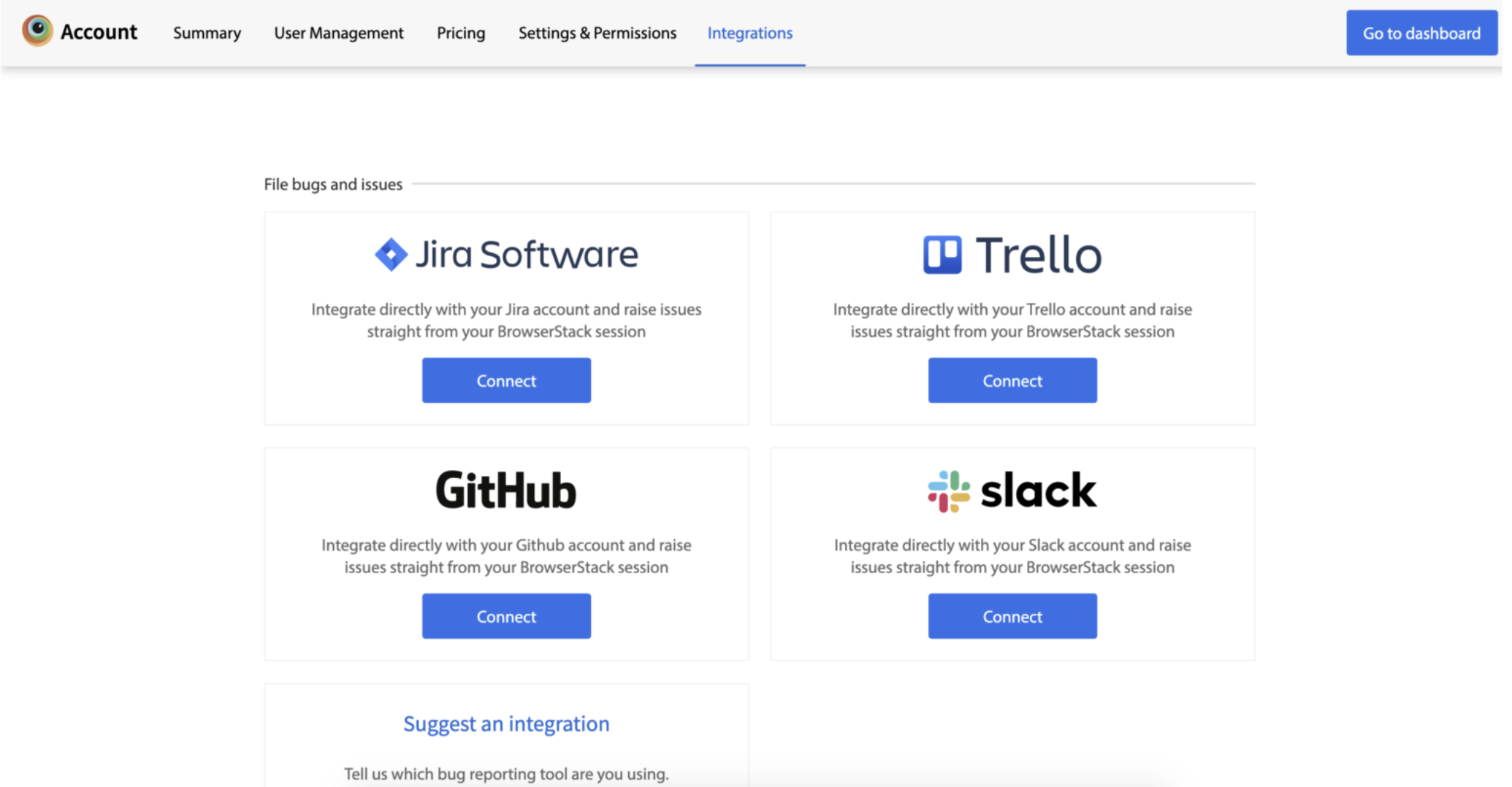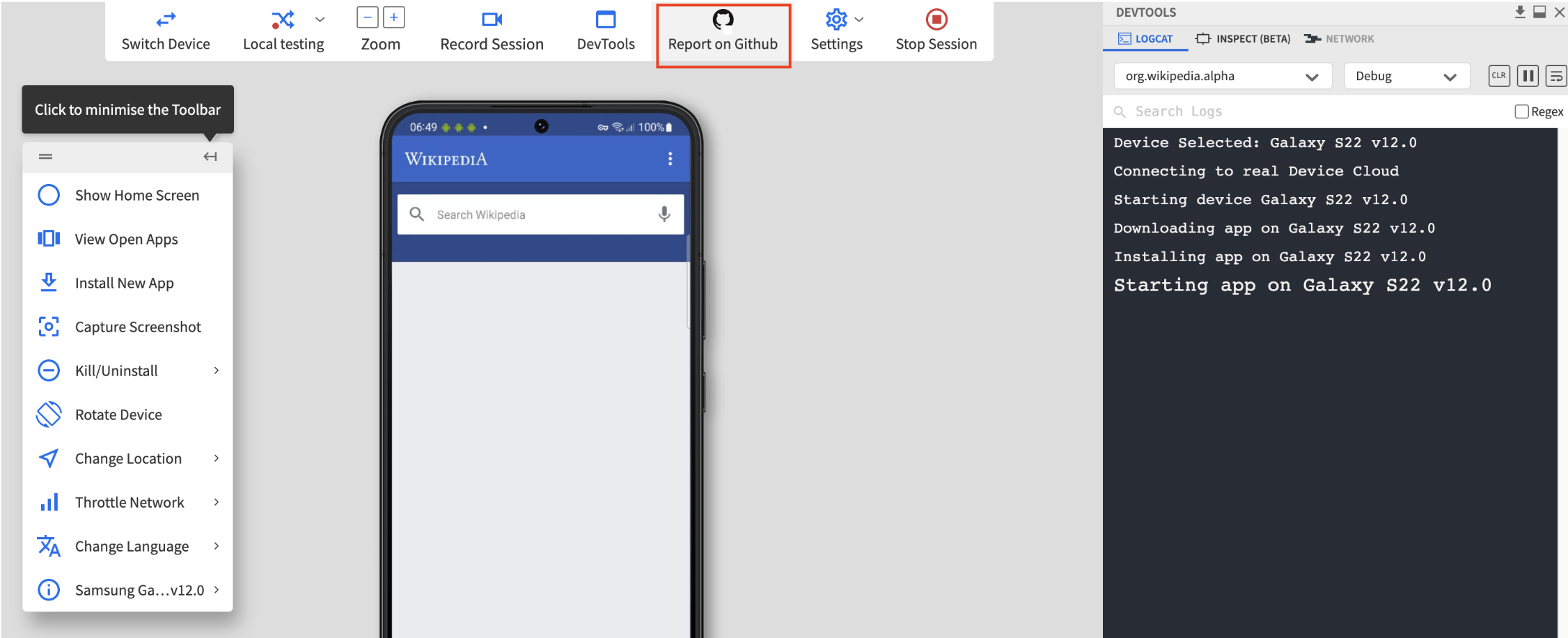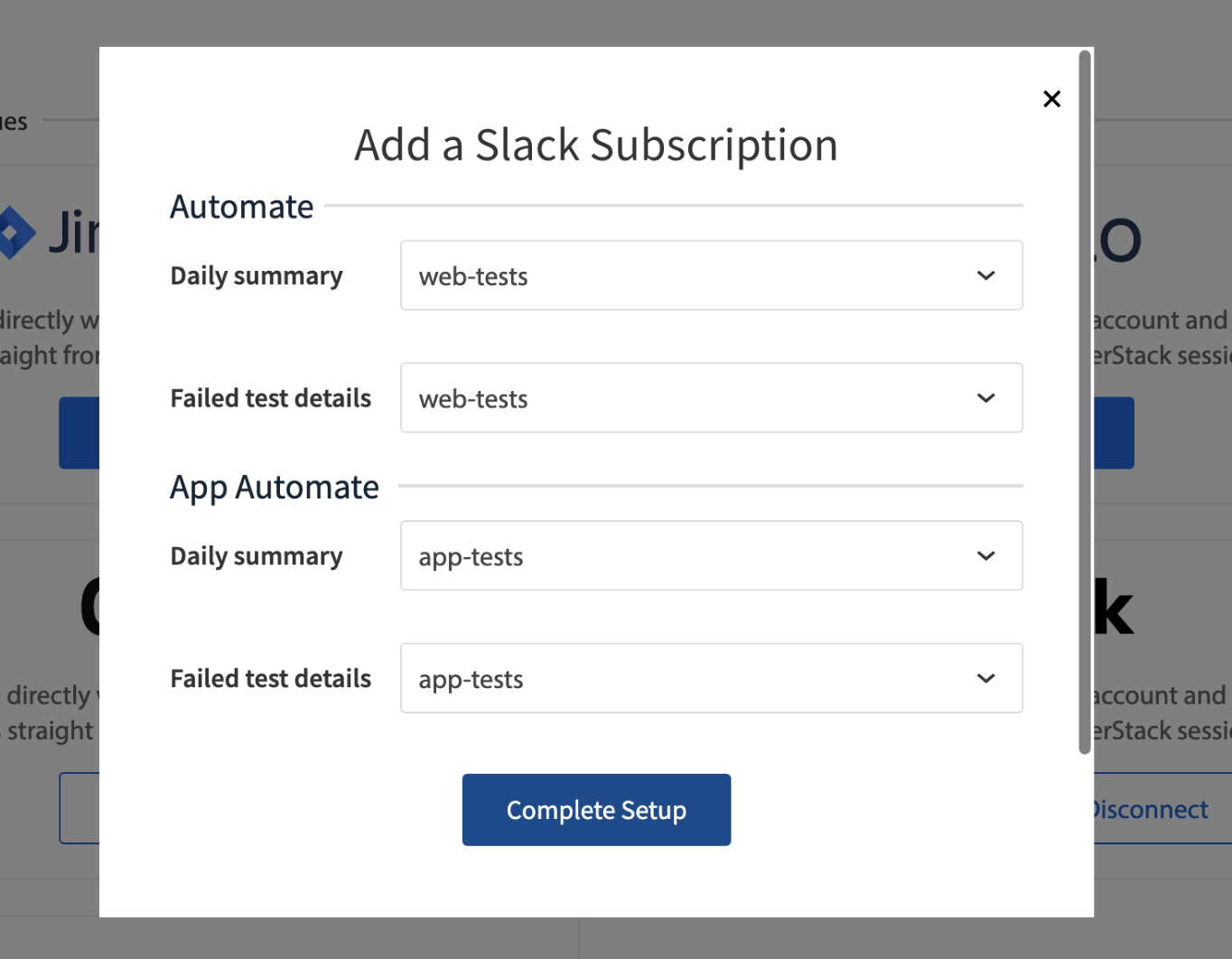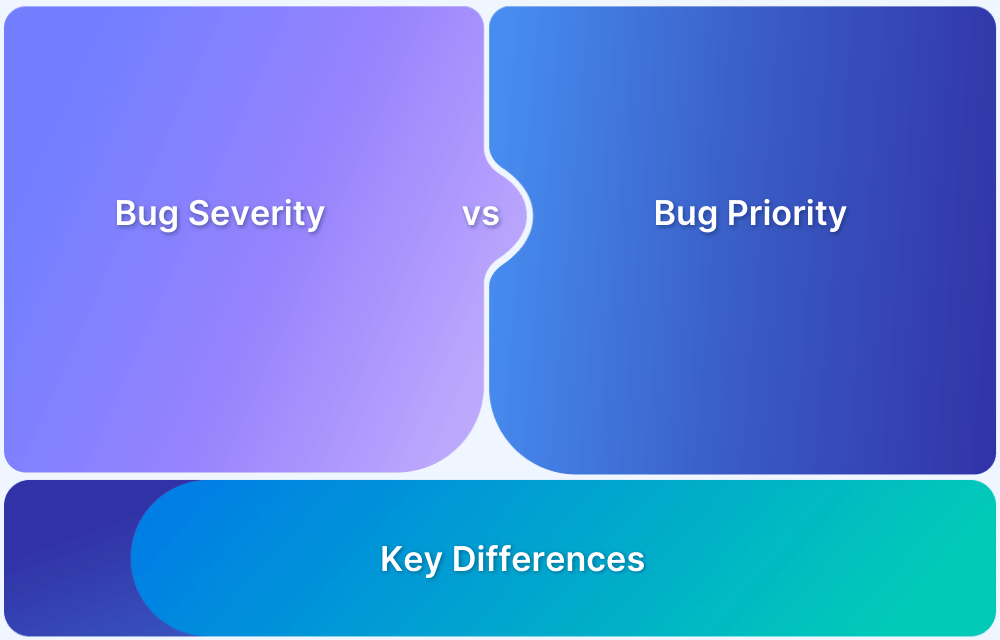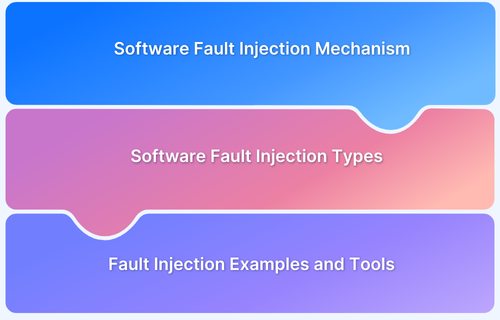Bugs are unavoidable in software and web application development and often slip through unnoticed during testing. A bug tracking system efficiently detects, tracks, and resolves these issues to to give a smooth user experience and high-quality software.
Overview
What is a Bug Tracking System?
Bug Tracking System is a software tool that helps teams identify, document, track, and manage bugs in a software development process.
Why integrate with a Bug Tracking System?
- racing Test Cases for Requirement Gathering – Helps link failed test cases to specific requirements for better debugging.
- Deliver Top-Notch Software – Tracks and resolves bugs effectively to enhance product quality and timely delivery.
- Spot Problems Beforehand – Identifies recurring issues early to streamline QA processes and prevent defects.
- Prevent Duplicate and Invalid Suggestions – Avoids redundant bug reports and ensures valid defect tracking.
- Greater ROI – Reduces development costs by focusing on critical bugs, improving efficiency and profitability.
- Improves Team Communication – Enhances transparency and coordination between developers, testers, and managers.
Benefits of Bug Tracking System
- Centralized Issue Management
- Enhanced Collaboration
- Boosted Productivity
- Effective Prioritization
- Comprehensive Reporting
- Accelerated Resolution
- Transparency and Accountability
- Improved Software Quality
- Seamless Integration
- Compliance Ready
- Scalable for Teams
This guide describes what bug tracking systems are and why you must integrate them with your software.
What is a Bug Tracking System?
A bug tracking system is a set of protocols or lifecycles that refer to identifying, prioritizing, and supervising defects in software or online products. This system of processes is repeated until all the bugs are removed. It is essential to make the software free of bugs so that it can meet the expectations and needs of the user/users. As part of the larger enterprise testing strategy, it helps an organization stay ahead of competitors in the same segment.
This is an essential process for every software and product company, and each has a different bug-tracking toolkit. But overall, the intentions are the same, to eliminate bugs and ship quality releases. You can use a customized protocol that the organization has developed.
Read More: Bug vs Defect: Core Differences
Benefits of Bug Tracking Software?
By using bug-tracking software, teams can achieve better organization, faster issue resolution, and ultimately, a more reliable and high-quality product.
Here are some of the top benefits of a bug tracking system:
- Centralized Issue Management: Consolidates all bugs and issues in one place, simplifying tracking, prioritization, and resolution processes.
- Enhanced Collaboration: Provides a shared platform for developers, testers, and managers to communicate and coordinate on bug fixes.
- Boosted Productivity: Automates repetitive tasks like assigning bugs, setting priorities, and tracking resolutions, freeing up time for critical work.
- Effective Prioritization: Helps teams prioritize bugs based on severity, ensuring critical issues are resolved promptly and efficiently.
- Comprehensive Reporting: Offers detailed reports and analytics to identify trends, recurring issues, and areas for improvement.
- Accelerated Resolution: Streamlines workflows by assigning tasks to the right team members, ensuring faster turnaround times.
- Transparency and Accountability: Tracks bug statuses and assigns responsibilities, creating a clear process where nothing falls through the cracks.
- Improved Software Quality: Ensures all reported issues are addressed effectively, leading to higher-quality products and better user satisfaction.
- Seamless Integration: Integrates with CI/CD pipelines, version control, and project management tools to streamline development workflows.
- Compliance Ready: Maintains a complete history of issues for easier compliance with standards and audit requirements.
- Scalable for Teams: Adapts to the needs of small teams or large organizations, ensuring efficient bug tracking regardless of project size or complexity.
The Bug Tracking Process
The bug tracking process involves multiple stages, right from detection during testing to fixing these bugs. Almost all bug tracking processes consist of six essential stages, which have been mentioned below:
1. Detection of Bugs
The developer can directly detect bugs during the product testing phase. The end user will report the bug to the developers during the beta-testing phase. A product tester could also identify these bugs. The bugs could be picked up during deployment also. So always be prepared in your bug tracking process.
2. Flagging and Analyzing the Bug Impact
After you have identified the bug and logged in with the help of a tool. These details tell everything about the nature of the defect. These details are sent to the developer, who analyzes how much of the functioning has been affected by the bug. It is then managed based on its severity and importance to the deployment. The bug prioritization scale ranges from minor bugs, then critical and, in the end, impairing severity.
Must-Read: Bug Severity vs Priority in Testing
3. Assessment of the Root Cause
After the bug has been flagged and analyzed for impact, the root cause is determined. After that, it is decided how it will be fixed. Now, sometimes it is possible to fix such issues without any need to address the root cause. But if you do not fix it in this phase, then there is a big chance that it can lead to the recurrence of the same problem. Having everything listed on a defect report for practical assessment and resolution is ideal.
4. Bug Fixing and Testing
After the above processes have been performed, the developers try to head towards the part of fixing the bug. Different approaches are tried for troubleshooting the issue and eliminating the bug.
After fixing the defect in the software, repeated testing is done, which checks if any other errors are left in it. Eliminating one issue could lead to problems in the other one. So, the testing and retesting phase is a critical one.
Automated Regression testing at this point is the efficient way to go about your bug tracking and resolution phase.
5. Reporting and Recording the Bug Data
Bug tracking helps to understand the process of functioning for the core software development team. The data for the bug that has been removed is documented for future reference. This way, the core development learns how the software/web app behaves and where it malfunctions.
Test suite visualizations in CI/CD are becoming increasingly vital as the popularity of automation testing grows. Data visualization becomes critical, and integrating with an efficient bug tracking and project management tool is imperative.
Why integrate with a Bug Tracking System?
Every software development company needs an in-house system for bug tracking or an in-house device lab, so no issues are left during a product launch. That is one of the primary reasons why it is necessary. However, there are some other astute reasons as well, which are mentioned below:
1. Tracing Test Cases for Requirement Gathering
If you have an integrated bug tracker, it will help trace it to a particular test case that has failed. It also helps to locate the main requirement, which lets developers make the necessary changes to eliminate the bug.
2. Deliver Top-Notch Software
A bug tracking system effectively traces and resolves the bugs in the product. It also helps monitor the team member’s performance by examining the measures to remove the detected flaw. Example: Progress through life cycle stages, history/work logs/ comments, and reports (graphs or charts). So that you can deliver the product or service at a fixed time and budget.
3. Spot Problems Beforehand
Since bug Tracking systems help the company document every problem in the software development process and bug-fixing phases, it streamlines essential QA metrics to modify and retest the code after removing the flaw. It also helps to arrive at the stage when the complete data is bug-free.
This also helps to understand the defect trend. Example–
- Is there any component/functional area of the application that records more bugs than others?
- What is the average age of defects?
- How long did it take between defect reporting and fixing/closing?
- Were there any problems related to the environment?
4. Prevent Duplicate and Invalid Suggestions
As a tester, one should thoroughly review the application and use the bug tracking system to find duplicate and invalid suggestions like -What defects were rejected by developers as ‘Not a defect’ or ‘works as intended’? Maybe the defect raised by the tester is already adapted by the developer as a feature to be developed in the next sprint.
5. Greater ROI
A bug tracking system in place helps prioritize the issues that are causing the bugs. If these issues are iterative, then the bug tracking system can remove them and focus on the critical problems. The development team, as a result, will not have to waste time on minor issues and fix those high-priority bugs. This improves the team’s productivity and reduces development costs leading to better ROI.
Follow-Up Read: Calculating Test Automation ROI
6. Improves Team Communication
Suppose a bug has arrived in a software module. But the QA team has no idea about it and never even hears about it. Also, you don’t know if this issue has been retested or returned. So if you have an issue tracking system, you can get an email or chat notification to fix the bugs. Not only is this a time saver, but it also improves communication and coordinates the development team.
BrowserStack infrastructure works straight out of the box and comes equipped with an efficient debugging toolkit and bug-tracking integrations with JIRA, Trello, Github, and Slack.
How does BrowserStack help in Bug Tracking?
Whether simple browser compatibility testing or accelerating CI/CD with parallel testing, choosing a testing platform that facilitates issue tracking tools and integrations is necessary. Setting up your testing infrastructure on BrowserStack cloud suite allows you to access a wide range of realistic test environments and scale as you need.
- With BrowserStack, your users can test from anywhere, and it fosters collaborations through integrations like GitHub, Slack, Jira, and Trello.
- It’s easy to create sub-teams, customize dashboard views, and allocate parallel threads to teams based on their testing needs.
- With project management and bug-tracking tool integrations, testers can report bugs, track issues, and keep track of their entire bug lifecycle.
BrowserStack’s manual and automated testing debugging toolkit makes it possible to quickly verify and debug UI functionality and usability to performance and network consumption.
- Live: Pre-installed dev tools on all remote desktop browsers and Chrome developer tools on real mobile devices (exclusive on BrowserStack)
- Automate: Screenshots, Video Recording, Video-Log Sync, Text Logs, Network Logs, Selenium Logs, Console Logs
- App Live: Real-time Device Logs from Logcat or Console
- App Automate: Screenshots, Video Recording, Video-Log Sync, Text Logs, Network Logs, Appium Logs, Device Logs, App Profiling
Conclusion
Integrating with a bug tracking system is essential for streamlined workflows, better team collaboration, and efficient issue resolution. It ensures that bugs are documented, prioritized, and addressed promptly, leading to higher software quality and satisfied users.
With BrowserStack, seamlessly integrate your bug tracking system to capture bugs directly from your testing sessions. Using BrowserStack, you can attach screenshots, logs, and other critical data to streamline debugging and deliver flawless user experiences faster.



